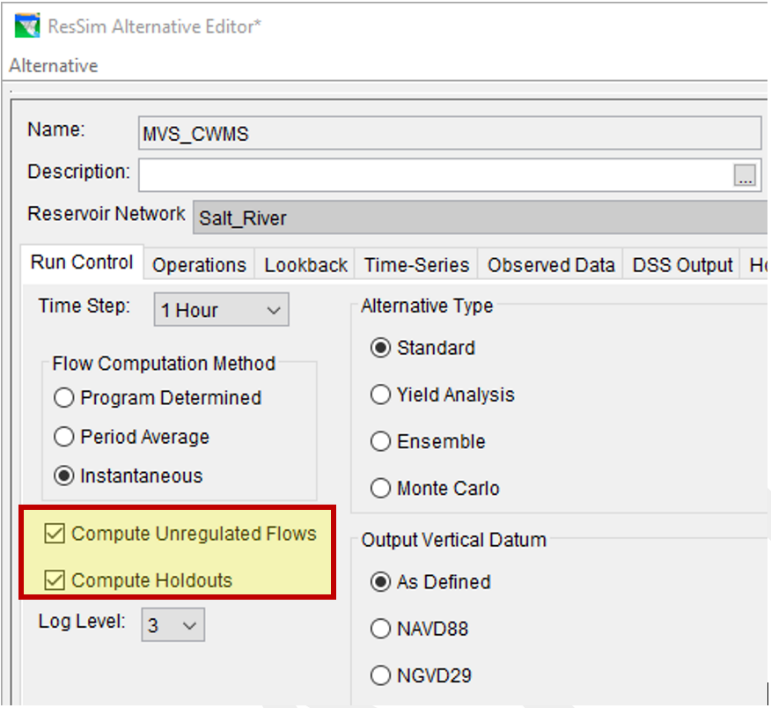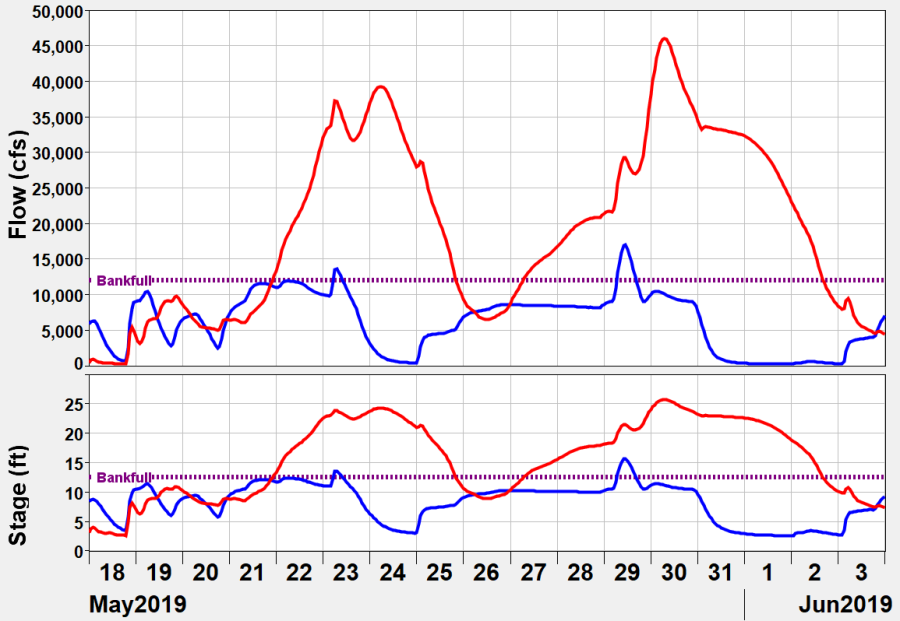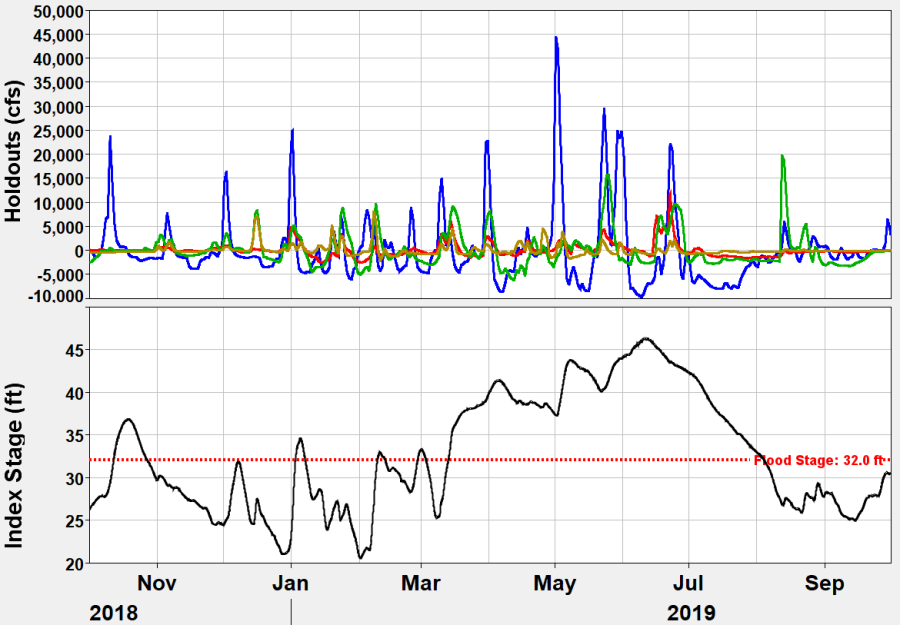Changes to HEC-ResSim Model Alternatives
To support AFDR analysis using HEC-ResSim, you need to enable two specific options in your HEC-ResSim alternative that are not typically used in routine CWMS forecasting:
- Compute Unregulated Flows
- Compute Holdouts
These options are activated in the Alternative Editor, as shown in the figure below.

Compute Unregulated Flows
When the Compute Unregulated Flows option is enabled, HEC-ResSim calculates the hypothetical flows that would occur at downstream points without any reservoir regulation.
Once you run the model:
- Compare the regulated and unregulated flow time series to assess the impact of reservoir operations.
- If rating curves are defined in the model, compare stages as well—this provides insight into floodplain conditions before running HEC-RAS.
Why this comparison matters:
- Understand the impact of regulation: Visualizing the difference helps you conceptualize the flood extent and storage effects before modeling in HEC-RAS.
- Catch calibration issues early: Discrepancies may indicate problems with input data or model setup that should be corrected before proceeding.
The figure below shows an example of regulated vs. unregulated flow and stage hydrographs from a typical HEC-ResSim simulation.

Compute Holdouts
Enabling the Compute Holdouts option allows HEC-ResSim to calculate how much flow each reservoir "holds out" and routes those values downstream.
- A positive holdout means the reservoir is storing water (reducing downstream flow).
- A negative holdout means the reservoir is releasing stored water, often after peak flows have passed and it is safe to do so.
These holdouts are routed to downstream computation points, and their timing and volume determine how flood damage reduction benefits are attributed to each reservoir.
The example below shows multiple reservoir holdouts routed to a common index gage downstream of the reservoir system. For more details on how these holdouts are used in flood damage analysis, refer to the HEC-FIA Model Setup documentation.

Handling Complex Watersheds
When upstream reservoirs are located outside of the CWMS watershed—and possibly outside of your district boundary—AFDR allocation becomes more complex.
You have two main options:
- Create a Combined HEC-ResSim Model
- Build a new ResSim model that includes all relevant reservoirs (even those outside the watershed). Use this model to compute holdout time series, then pass those values to the individual HEC-FIA models for FDR allocation.
- Use External Holdout Time Series
- Obtain holdout data from upstream watersheds, then manually route, combine, and process the time series outside of HEC-ResSim or HEC-FIA. You can then import the processed results into HEC-FIA using the Holdout Overrides table, assigning fixed percentages to each reservoir.
For guidance on both approaches, see the HEC-FIA Model Setup documentation, which explains how to process and use external holdouts for FDR apportionment.